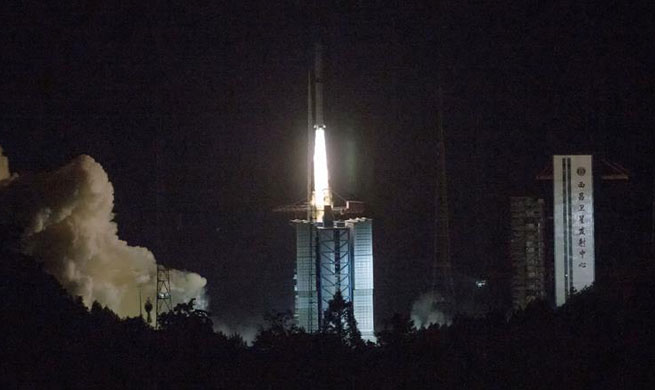WASHINGTON, May 21 (Xinhua) -- A research from the University of Oxford suggested a new theory that for most animals the Cambrian Explosion around 540 to 550 million years ago was a gradual process, but happened no earlier than 550 million years ago.
According to a paper published Monday in the Proceedings of the National Academy of Sciences, a team at Oxford University Museum of Natural History and the University of Lausanne carried out a comprehensive analysis of early fossil euarthropods from every different possible type of fossil preservation.
The Cambrian Explosion produced the largest and most diverse grouping of animals Earth has ever seen, namely the euarthropods.
Euarthropoda contains the insects, crustaceans, spiders, trilobites, and a huge diversity of other animal forms alive and extinct. They comprise over 80 percent of all animal species on the planet and are key components of all of Earth's ecosystems.
The new analysis found, taken together, the total fossil record shows a gradual radiation of euarthropods during the early Cambrian, 540 to 500 million years ago.
It presented a challenge to the two major competing hypotheses about early animal evolution.
The first claimed the nearly instantaneous appearance of euarthropods 540 million years ago because of highly elevated rates of evolution.
The other hypothesis suggested a slow, gradual evolution of euarthropods starting 650 to 600 million years ago.
Instead, the new research adopted a middle-ground between these two hypotheses, with the origin of euarthropods no earlier than 550 million years ago, but with the subsequent diversification taking place over the next 40 million years.
"Each of the major types of fossil evidence has its limitation and they are incomplete in different ways, but when taken together they are mutually illuminating and allow a coherent picture to emerge of the origin and radiation of the euarthropods during the lower to middle Cambrian," said Allison Daley, who carried out the work at Oxford University Museum of Natural History and at the University of Lausanne.
"This indicates that the Cambrian Explosion, rather than being a sudden event, unfolded gradually over the 40 million years of the lower to middle Cambrian," Daley said.
It has been argued that the absence of euarthropods from the Precambrian Period, earlier than around 540 million years ago, is the result of a lack of fossil preservation. But the new fossil study said that this wasn't the case.
"The authors make a very compelling case that the late Precambrian and Cambrian are in fact very similar in terms of how fossils preserve," said Greg Edgecombe from the Natural History Museum, who was not involved in the study. "There is really just one plausible explanation: arthropods hadn't yet evolved."

















